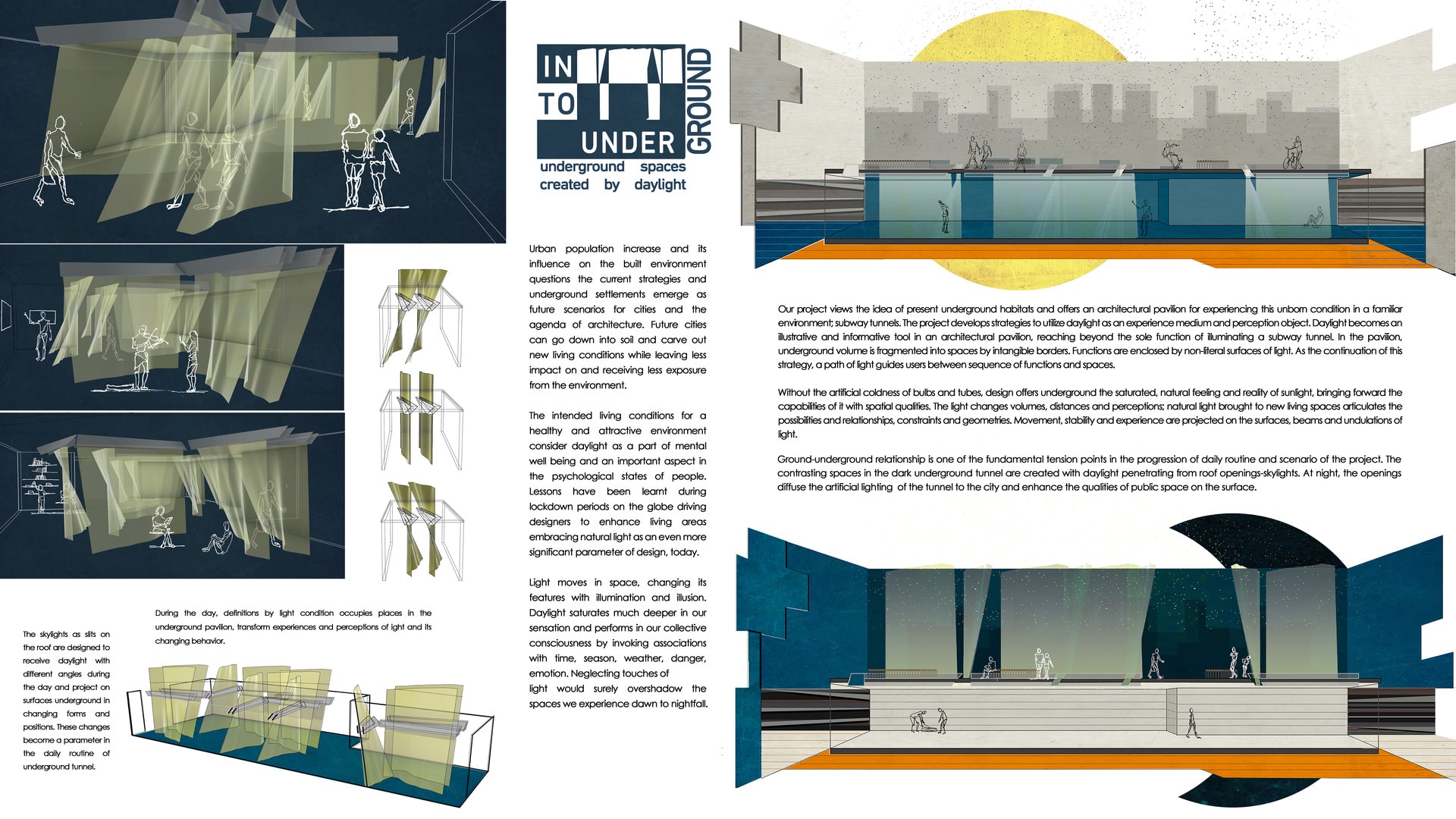Project Description
Urban population increase and its influence on the built environment questions the current strategies and underground settlements emerge as future scenarios for cities and the agenda of architecture. Future cities can go down into soil and carve out new living conditions while leaving less impact on and receiving less exposure from the environment. The intended living conditions for a healthy and attractive environment consider daylight as a part of mental well being and an important aspect in the psychological states of people. Lessons have been learnt during lockdown periods on the globe driving designers to enhance living areas embracing natural light as an even more significant parameter of design, today. Light moves in space, changing its features with illumination and illusion. Daylight saturates much deeper in our sensation and performs in our collective consciousness by invoking associations with time, season, weather, danger, emotion. Neglecting touches of light would surely overshadow the spaces we experience dawn to nightfall. Our project views the idea of present underground habitats and offers an architectural pavilion for experiencing this unborn condition in a familiar environment, subway tunnels. The project develops strategies to utilize daylight as an experience medium and perception object. Daylight becomes an illustrative and informative tool in an architectural pavilion, reaching beyond the sole function of illuminating a subway tunnel. In the pavilion, underground volume is fragmented into spaces by intangible borders. Functions are enclosed by non-literal surfaces of light. As the continuation of this strategy, a path of light guides users between sequence of functions and spaces. Without the artificial coldness of bulbs and tubes, design offers underground the saturated, natural feeling and reality of sunlight, bringing forward the capabilities of it with spatial qualities. The light changes volumes, distances and perceptions; natural light brought to new living spaces articulates the possibilities and relationships, constraints and geometries. Movement, stability and experience are projected on the surfaces, beams and undulations of light.
